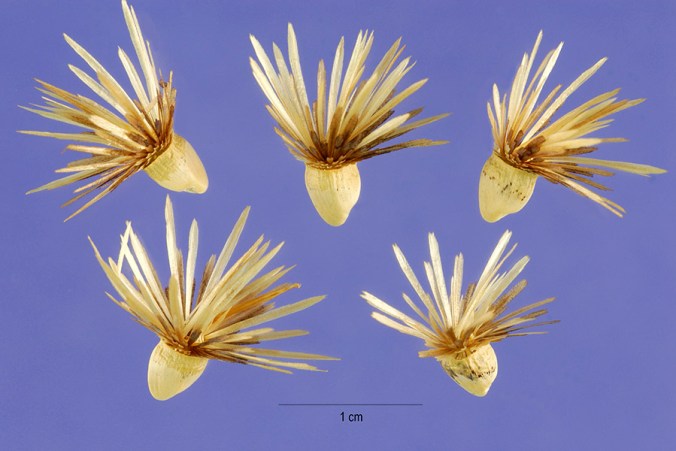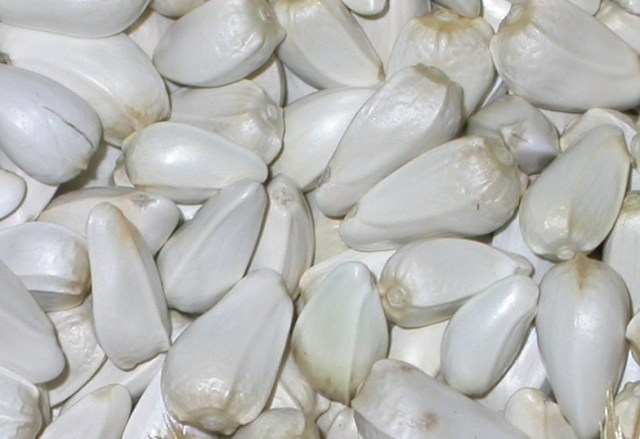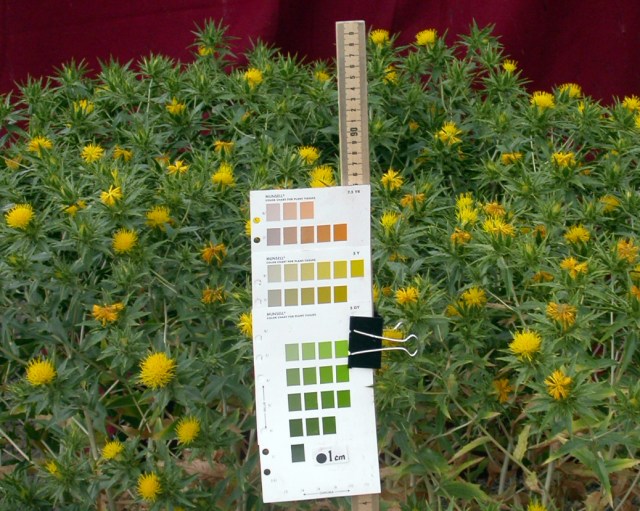Our white mystery seeds from last week were indeed mysterious.
The flower is lovely. I thought it was a safflower, but it was growing “wild” at a park.
Here’s where seed identification comes in handy.
These are our mystery seeds from the plant above.
 One possibility is that the seeds are from a plant closely related to safflower, Carthamus lanatus, which is known as woolly distaff thistle or saffron thistle. The plant does look like a thistle, and looks like it is covered with spider webs, which is how woolly distaff thistle is described.
One possibility is that the seeds are from a plant closely related to safflower, Carthamus lanatus, which is known as woolly distaff thistle or saffron thistle. The plant does look like a thistle, and looks like it is covered with spider webs, which is how woolly distaff thistle is described.

(Photo by Steve Hurst @ USDA-NRCS PLANTS Database)
Those are woolly distaff thistle seeds. Hum, I don’t think so.
(Photo by Steve Hurst @ USDA-NRCS PLANTS Database)
How about Carthamus oxyacanthus or jeweled distaff thistle? Still don’t look quite right, although it is closer.
(Photograph by V.L.Bradley, Safflower images gallery)
These are safflower seeds, Carthamus tinctiorius. Don’t you think that’s matches the mystery seeds?
(Photograph by V.L.Bradley, Safflower images gallery) – Safflowers.
Our mystery plant.
People probably feed the birds at this park and some bird seed mixes contains safflower seeds. Mystery solved!
By the way, safflower is very drought tolerant and can be grown as a crop in Arizona.
Have you ever seen safflower growing?







I found this site while checking to see if the safflower was invasive in OK. I want to plant them because those nasty Grackle birds don’t like them. All the other birds in my yard love them. Thanks for the pics. Kathy
Yes, birds do love safflowers. I believe safflower is related to knapweed, which is an invasive weed.
So this is what a safflower plant looks like. I pulled em up as I have NO birds that will eat them. I let them bloom, but once the plants wilted, I pulled them with intents to reseed. Now that I know what they are, not replanting.
Should I soak seeds in water before planting? How deep to plant in a containe?.
No need to soak safflower seeds, although it probably won’t hurt them.
If there are no instructions on the package, a general rule is to plant seeds to a depth of 1 to 2 times their diameter (width).